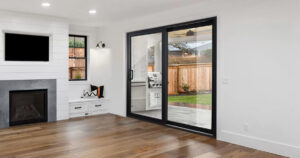Old and damaged windows don’t just look shabby; they can contribute to high energy bills. Replacing them with new, efficient windows can ease the burden on your wallet and make your home more comfortable.

If you’re considering window replacement, get estimates from several companies. Consider things like frame material, window type and adding options such as argon or krypton gas-filled glass to improve insulation and reduce noise. Visit https://www.kelemerbrothers.com/ to learn more.
When it comes to window replacement, there are many factors that go into a quality installation. This includes the style of windows that work best with your home, the materials chosen for your window frames, and the overall look you are going for.
Before the crew arrives on the day of your window installation, it is important to prepare the area for the project by clearing away furniture and wall hangings that could get damaged during the construction process. This will also help the crew have easy access to the areas they need while working. The crew should place tarps in the area they will be working to keep the floor clean and minimize debris from being tracked throughout your house.
The removal of existing trim should be done carefully to avoid damaging the wall or existing window frame. This is especially true if the trim is to be reused around the new window. Using a tool to score the caulk and pry it loose will allow the trimming to be removed without leaving any marks behind. If the trim needs to be cut, it should be done with a handsaw or jigsaw for the safest and most precise removal.
Once the old window is removed, it is important to remeasure the window opening. This will ensure that the new window is the correct size to fit the frame. If the window is not the correct size, it will not seal properly and can lead to water leaks and mold growth. The measurement process is done both vertically and horizontally to account for foundational movement that can shift the window opening over time.
Once the measurements are made, the new window will be ordered and the crew will begin to install it. This can take a few days, depending on the number of windows being replaced and the size of your home. Before beginning the actual installation, the crew should walk through the scope of the job and reconfirm all details with the homeowner. This will give the homeowner an opportunity to ask any last-minute questions or concerns.
Measurement
Window replacement is a great way to upgrade the look and feel of your home while also increasing its energy efficiency. However, it’s important to take the proper measurements before purchasing replacement windows so they will fit in the existing window opening properly. In this blog post, we’ll walk you through a simple three-step process for taking the necessary measurements.
Start by measuring the width of your window frame in three places, on the left, middle, and right side of the frame. Write down the smallest measurement.
Next, measure the height of the window frame in three places, on the top, middle, and bottom. Again, write down the smallest measurement. Finally, measure the depth of your window frame in two opposite diagonal directions to check that your window is square. If it isn’t, use shims to fill the gap between the frame and the framing.
When measuring the width of your window frame, make sure to keep the tape measure snug against the trim boards and avoid any slack or flex. Also, be sure to take the measurement from the inside of the frame rather than the outside. To do this, position the tape measure at the top corner where the horizontal and vertical trim boards meet and extend it to the bottom right corner of the frame.
For the height of your window, begin at the top by measuring the distance between the head jamb (the vertical piece of trim that extends down from the frame) and the sill, which is the lowest horizontal piece of trim. Continue the process on the left and center sides of the window.
For the depth of your window, open the window and measure from the head jamb to the sill. Repeat this on the left and center sides of the window. Once you have all of the required measurements, it’s time to compare them and decide which window size is best for your home. Ideally, the new windows should be within one-quarter of a quarter inch of each other, which will ensure that they will fit into your existing window opening.
Installation
During installation, the contractor removes your old windows and replaces them with your new ones. They may also install any other window accessories, such as a vent screen or storm door. The crew will then clean up the work area and dispose of your old windows. Before they begin, ask the crew lead to walk through the project with you to make sure that all of your windows match up and are ordered correctly.
This is a good time to point out any special instructions that you may have for the installation. For example, if you want them to save your trim or preserve wall treatments, let them know now. It’s also a good idea to point out any landscaping, furniture or other items that should be protected during construction. The crew should cover these areas with tarps or other coverings.
The contractors will then clean the window opening to remove any dust or debris and prepare it for the new window. If you’ve chosen to add window wraps, they will install these around the perimeter of your new windows and caulk them around the edges. They will also paint any trim or window boxes that need it.
After the new windows are in place, they’ll seal, caulk and insulate them on the interior and exterior to prevent air leaks and water damage. Having your windows properly installed can help you to save hundreds of dollars per year on energy costs.
Your contractor will check that your new windows are centered, level and plumb in the frame with a level or square. If necessary, they’ll use shims to make the window fit the frame more precisely. They’ll also insert shims behind the meeting rails to stabilize them and provide a tight seal.
Before they leave, the crew leader will give you a final tour of your home and demonstrate how to operate your new windows. They’ll also take the time to answer any final questions that you have. Then, they’ll finish the job by testing all of your new windows to make sure that they open and close properly.
Final Inspection
After all the hand-wringing, decision-making and planning is complete, your new replacement windows are finally ready to be installed. The excitement is in the air, and you can start dreaming about the beautiful home that you’ll soon be living in.
Once the windows are installed, it’s important to check the workmanship. It’s possible that the window might be installed unevenly, and you’ll want to make sure that it is squared properly. This can be done by measuring diagonally across the frame, which will show if it’s out of alignment. If it is, a few shims may be needed to make the frame square again.
It’s also a good idea to look at the stops on the frame to make sure they are in place and not damaged. If the stops are cracked or chipped, wood filler can be used to repair them. After the filler has dried, it can be sanded down and then painted.
Another thing to do is to make sure that the caulking has been done properly, and that it’s with an exterior caulk that will withstand the elements. If it isn’t, the seal will fail quickly.
You’ll also want to make sure that the trim around the window has been primed and painted with the right product. If not, the trim will also eventually fail and need to be replaced.
If you have a security system installed that connects to your current windows, make arrangements with the contractor to disconnect it before they arrive. This will prevent the alarm from being activated while they’re working on your new windows.
A full-frame replacement involves removing the existing frame and sash, and installing an entirely new window in a fresh opening with new insulation and trim. This is often necessary when the original window is damaged or if you need a different size or style of window. It’s also a good choice when you want to install a more energy-efficient window. A full-frame replacement will usually cost more than a pocket replacement, but it can save you money in the long run.
